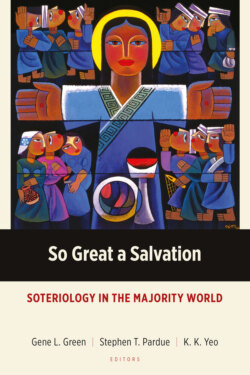Читать книгу So Great a Salvation - Группа авторов - Страница 13
На сайте Литреса книга снята с продажи.
“Western” Tendencies
ОглавлениеWestern soteriological tendencies reflect both major historical traditions and influential recent trends. Of course, such an assignment requires a gargantuan level of generalization, beyond the usual oversimplification that all education requires.
Such generalization begins with the very label “Western”: in one sense it really means Northern, as opposed to Majority World theologies located largely in the Global South. In another sense, soteriologically, “Western” references the Augustinian tradition, which has generated Catholic and Protestant socially embodied arguments over many centuries. Yet the contrast implied in the present context, concerning Majority World theologies, probably includes the Orthodox tradition as well, since its heritage of theosis (deification) overlaps considerably with the Catholic tradition and even some Protestant accounts. Finally, for all the differences between Augustinian and Eastern tendencies, together they present another complexity: Augustine and other classic figures were African or Middle Eastern, not European—however Latin or Greek their language and however Roman their context. Hence “Western” functions quite imprecisely, as an omnibus contrast term.
Likewise, the boundaries of “soteriology” are fuzzy—overlapping with Christology, especially for atonement; pneumatology, especially for sanctification; and eschatology, especially for glorification. Systematic theology as modernity knows it, seeking an ordo salutis (order of salvation) that logically arranges the Spirit’s application of Christ’s saving benefits, is a comparatively recent invention. Its meandering development exacerbates the challenge of accurately characterizing Western soteriologies. Should Orthodox soteriology focus on creedal consensus, later theologians’ tendencies, or priestly and popular beliefs? Should Catholic soteriology focus on official dogma, catechetical material, historical eras, or geographical regions, let alone variety among priests, theologians, and the laity? For Protestant soteriologies, similarly, if their welter of systematic theologies reduces formal, printed variety to a somewhat manageable set of traditions and tendencies, then various denominations and popular trends quickly make such moments of apparent consensus less manageable. The following overview attempts to address both the gospel that is formally proclaimed and on occasion, however complex, what is apparently implied or actually practiced.
